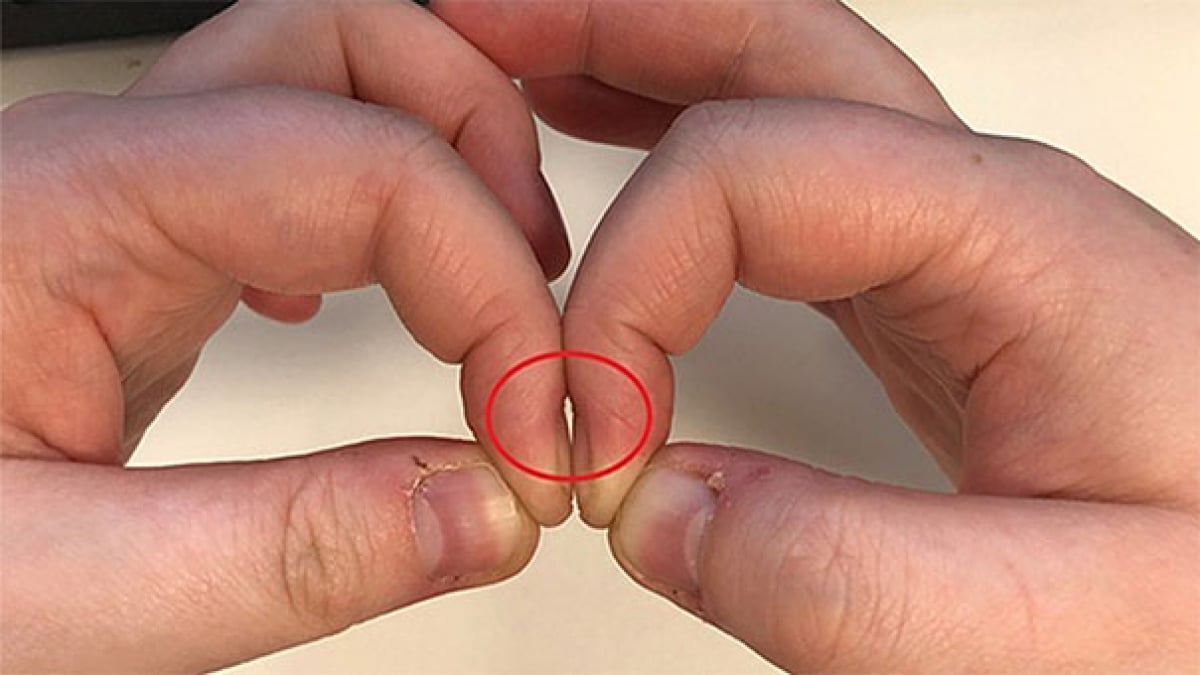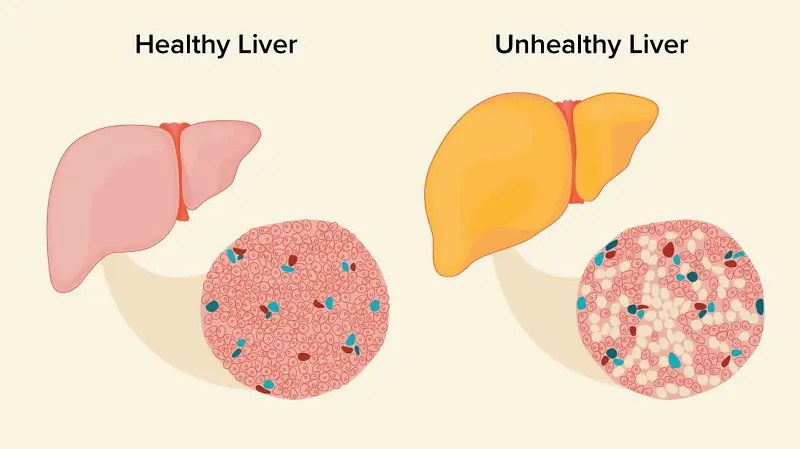
Placing Two Index Fingers Together Can Reveal Lung Cancer: A Quick Test Used by Doctors
Lung cancer is one of the deadliest forms of cancer worldwide, often going undetected until it reaches advanced stages. Early detection is crucial, yet many symptoms can be vague or mistaken for less serious conditions. In recent years, however, medical professionals have highlighted a surprisingly simple self-check method that could indicate a warning sign of lung disease, including lung cancer. This method involves placing the tips of your two index fingers together — a test that takes only a few seconds but could reveal something important.
This quick self-examination is called the “Schamroth Window Test” or “finger clubbing test.” To perform it, one simply places the fingernails of both index fingers against each other, forming a small diamond-shaped window between the nail beds. In healthy individuals, this gap — known as the “Schamroth’s window” — is clearly visible. However, if the space is missing and the nails press tightly against one another with no visible opening, it could be a sign of digital clubbing, a symptom often associated with lung cancer and other chronic diseases.
Digital clubbing is a physical change in the fingers or toes where the tips become enlarged and the nails curve around the fingertips. This condition develops gradually and may go unnoticed without a test like this. It is believed to result from low oxygen levels in the blood over an extended period. Since the lungs are responsible for oxygenating the body, any chronic issue with lung function — including lung cancer, chronic obstructive pulmonary disease (COPD), or pulmonary fibrosis — can lead to clubbing.
While digital clubbing is not a diagnosis in itself, it is considered a red flag for underlying health issues. Lung cancer is one of the most common causes, particularly non-small cell lung cancer, which accounts for about 85% of cases. When tumors grow in the lungs, they can interfere with normal oxygen exchange and circulation, triggering a cascade of physiological responses that result in clubbed fingers.
The simplicity of this test makes it an effective awareness tool, especially for individuals who may be at higher risk of lung cancer — such as long-term smokers, people exposed to second-hand smoke, or those with a family history of respiratory disease. If someone notices a loss of the Schamroth’s window, it doesn’t confirm cancer, but it should prompt a medical consultation. A doctor can follow up with appropriate imaging tests like a chest X-ray or CT scan to explore further.
Doctors emphasize that early detection of lung cancer significantly improves survival rates. In its early stages, lung cancer may not cause severe symptoms, but small signs like finger clubbing could provide the only warning. That’s why simple observations and regular self-checks are essential, particularly for older adults or those with persistent respiratory symptoms such as chronic cough, wheezing, or unexplained fatigue.
It’s also important to understand that digital clubbing can occur with other serious conditions as well, including heart disease, liver disorders, and gastrointestinal diseases. Therefore, a positive result on the finger test should not lead to panic, but it must be taken seriously. The key is not to ignore it.
In conclusion, the act of placing your index fingers together might seem like a meaningless gesture, but it can offer a critical glimpse into your lung health. Known as the Schamroth Window Test, this quick and simple method is being recognized by doctors around the world as an effective way to raise awareness of potential lung disease, including cancer. Though it is not a replacement for medical diagnosis, it can be the first step in identifying a problem early — when treatment has the best chance of success.
News in the same category


11 Reasons Why You Should Drink Aloe Vera Water Every Day

Shocking findings of new trial on Ozempic alternative pushes it closer to approval

Experts Warn People To Get Rid Of This Common Bedroom Item Over Fears It Might Harm Brain Health

The Side Effects of Ibuprofen You May Not Be Aware Of

6-Year-Old Boy Suffers Stroke After Waking Up – Doctor Urges Parents to Know These 4 Warning Signs to Save Their Child

3 Eye Symptoms That Could Warn of a Stroke or Cancer – Don’t Ignore Them

17 Common Foods That May Trigger Kidney Stones – What to Avoid for Healthier Kidneys

12 Strange Signs in Your Feet That Could Be Warning You About Liver Problems

If these happen to you, it’s high time you see a doctor

Man who saw ‘proof’ that ‘death is not the end’ explains the seven levels of afterlife

Over 50 Individuals Die Within Hours Of Symptoms Of An Unknown Illness Alarming Doctors

Warning sign of teen’s inoperable cancer that hit hours before diagnosis – now nothing can be done

If You See Someone with 'Visible Blue Veins', You Must Tell Them This — It Could Save Their Life

Common Habit Linked to 45% Higher Risk of Prostate Cancer in Men

The Surprising Reason to Keep a Glass of Water by Your Bedside at Night

Scientists Have Identified Specific Cognitive Skill Linked To Longer Life In Older Adults

21-Year-Old Woman With Terminal Colon Cancer Warns Of The Early Symptoms That Are Simple To Ignore

Understanding the Causes of a Fishy Vaginal Odor
News Post

Here’s What The Lines On Bath Towels Actually Mean

Fake Honey is Flooding The Market — Here’s How To Spot The Real Thing

Here’s What It Really Means When A Man Turns His Back In Bed

Stop Shaving! Discover Natural Ways to Permanently Remove Facial, Body, and Pubic Hair

11 Reasons Why You Should Drink Aloe Vera Water Every Day

Shocking findings of new trial on Ozempic alternative pushes it closer to approval

Experts Warn People To Get Rid Of This Common Bedroom Item Over Fears It Might Harm Brain Health

The Side Effects of Ibuprofen You May Not Be Aware Of

6-Year-Old Boy Suffers Stroke After Waking Up – Doctor Urges Parents to Know These 4 Warning Signs to Save Their Child

3 Eye Symptoms That Could Warn of a Stroke or Cancer – Don’t Ignore Them

My MIL Ruined Our Wedding Three Times – But She Was the Only One Who Lost in the End

Child Made a New Friend at School, but Mom Is Shocked to Learn Who the Girl's Mother Is

I Became a Surrogate for My BIL and His Wife – When He Saw the Baby, He Yelled, 'This Must Be a Mistake!'

My Ex-husband Gifted Our Kid a Rocking Horse – When I Saw What Was Inside, I Called My Lawyer

My Husband and His Mistress Accidentally Got Into My Taxi So I Gave the Cheater an Anniversary He’ll Never Forget

Man Mocks Wife for Gaining Weight after Giving Birth, Finds Her Diary after She’s Hospitalized

My Stepdaughter Betrayed Me and Kicked Me Out After I Raised Her Like My Own – So I Used My Experience to Turn My Life Back Around

17 Common Foods That May Trigger Kidney Stones – What to Avoid for Healthier Kidneys

12 Strange Signs in Your Feet That Could Be Warning You About Liver Problems
